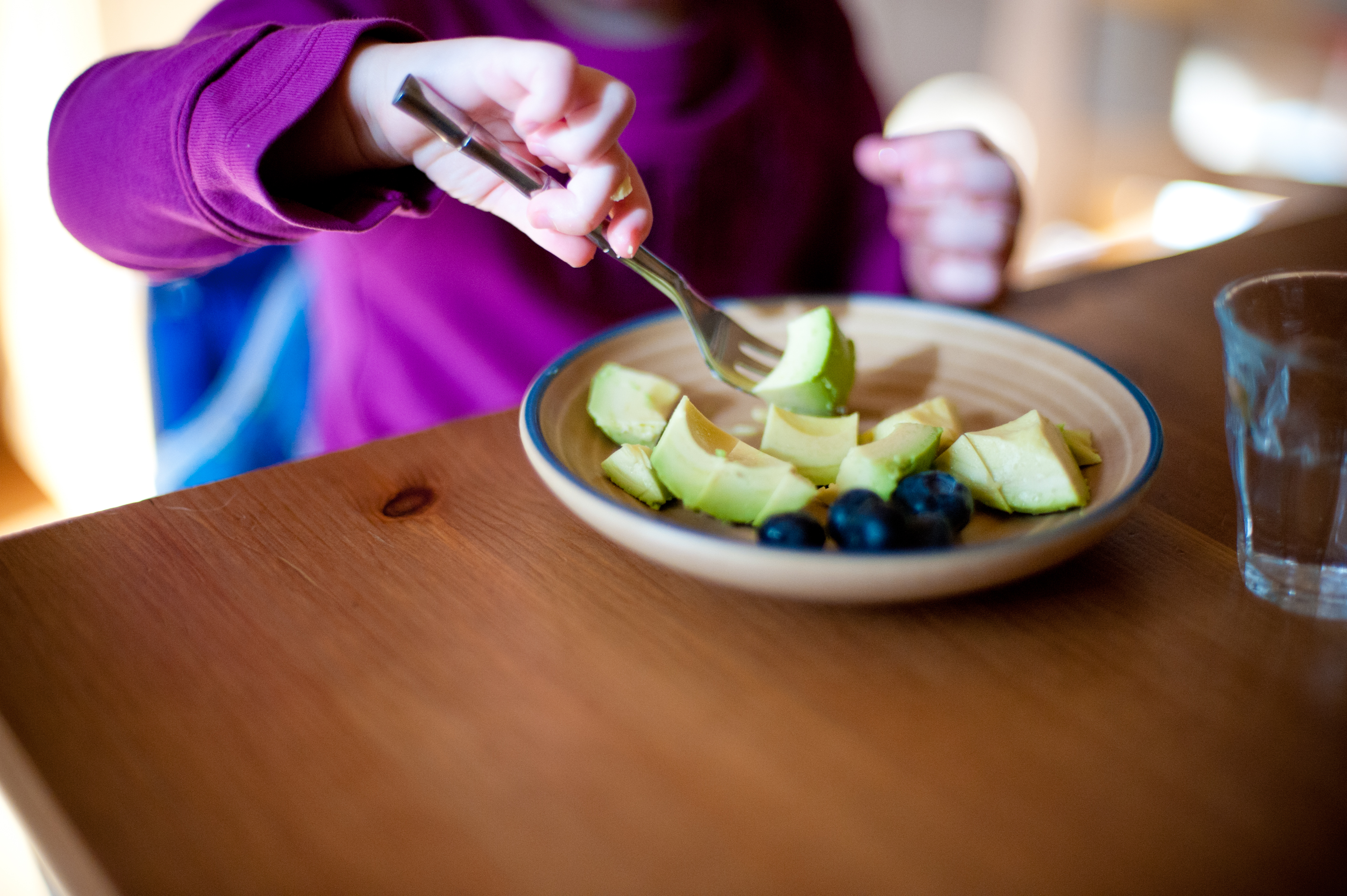Here’s a question I hear a lot from parents of toddlers (and older children too): “How do I get them to eat nutritious foods?” Well, I’m going to give it to you straight, but you might not like what I have to say on the subject.
The current research is clear about two things:
1) Eating meals together as a family produces healthier eating
2) Your kids will eat what you eat
So, if you don’t want your children to drink sugary soda, guess what? You’re going to have to give it up.
Of course, we’ve found a temporary way around that one, we just tell our daughter that we’re having an “adult drink” and so far, she accepts that. But we know it won’t last forever, and truly, sugary drinks are quickly becoming the next national health crisis. We have got to get over our addiction to them.
When my daughter was just starting solid foods I kept a list of the foods I had introduced and made sure to offer new ones every week. I’m not quite sure why I stopped that, but if you find yourself in a rut, try making a list of all of the foods you know your child will eat, and then make another list of foods to introduce. Go through your list systematically and record their responses.
Don’t give up if your child says they don’t like Brussels sprouts (or any other vegetable). Instead, find new ways to prepare them and offer them multiple times throughout the week or month.
Children’s taste buds change a lot as they mature, so just because they didn’t like it in April, doesn’t mean they won’t enjoy it in October. Children also enjoy refusing foods as a way to have some control over their lives, and sometimes just to see if they can get an emotional reaction. My recommendation is to relax, let go of your attachment to them eating your world famous chicken soup, and keep offering them the healthy foods you love to eat. Eventually you’ll win them over.
Here are some “foods” to watch out for:
- Hydrogenated or partially hydrogenated oils
- Added sugars (including fructose, corn syrup, dextrose, sucrose and more)
- White breads and crackers
- Fried foods
- Foods high in saturated fat
- Sugary drinks (including juices)
And here are some foods to encourage:
- Fruits (any and all whole fruits are healthy)
- Vegetables (a wide variety of colors and textures)
- Nuts and legumes
- Lean meats and fish
- Whole grains
- Calcium rich foods
At our house, I’ve found that it’s much easier to encourage my daughter to eat fruits and veggies when that’s what we have around the house and on the table. She inevitably asks to eat whatever we’re eating, so when everything available is something I’d feel good about feeding her, I know we’re on the right track.
There are lots of strategies you can employ for how to encourage healthy eating. Sometimes I offer the green vegetables first when Julia is hungriest and then I add cheese and fruit toward the end of the meal. We also keep a large bowl of fruit on our kitchen counter and everything processed is hidden away in the pantry. That way, when we need a quick snack, fruit is the quickest, easiest, and most available choice. Plus it’s delicious and nutritious!
If your child is particularly stuck on “kid foods” like macaroni and cheese and pizza, try making your own whole-wheat and low fat versions of their favorite foods.
Another strategy is to engage children in the activities of cooking. When kids prepare their own food, they’re much more likely to want to eat it.
I enjoyed reading Jessica Seinfeld’s cookbook “Deceptively Delicious” in which she shares recipes with hidden healthy ingredients, usually in the form of vegetable purees added to traditional meals.
And while I love it that she figured out a way to get her kids to eat their veggies, I’m not sure how I feel about the fact that they don’t know about it. Personally, I’d rather model healthy eating that’s above board.
I want my daughter to get into the habit of eating fruits and vegetables so that when she’s faced with other choices, as she gets older, she already knows that she loves squash, sweet potatoes, lentils, and black beans.
I know that modeling healthy eating works because just last week as I ate a spinach salad, my daughter asked, “Can I have some?” and then proceeded to scarf down about 10 pieces of raw baby spinach. I hadn’t really offered her raw spinach before, assuming that she’d prefer it cooked. But she loved it!
So my recommendation if you’re having trouble getting the kids to eat their veggies, is to continue to enjoy your own plate of delicious vegetables and keep offering them some time after time until one day they decide they really like them.
When you’re packing snacks for a day out, be sure to include some fresh fruit and vegetables along with the standby applesauce (with no added sugar) and cheesy crackers that you already know they love.
Two more things:
1) We have to let go of the idea the every meal has to be well balanced and eaten heartily. Kids have variable appetites, some days they’ll eat everything you put in front of them, and other days just a few bites of food is enough. So, start to think about your child’s nutrition on a weekly, rather than a daily basis.
2) Let go of the idea that by refusing the food you’ve prepared, your child is somehow trying to hurt your feelings. They’re not. They’re just being kids and we have to trust them to know what their bodies need (as long as we’re providing nutritious options). When we get attached to a specific outcome, children often rebel. No one wants to be forced to do anything, so the more you can model healthy eating and then let go and trust, the more likely it is that your child will choose to eat healthy foods.
Have a healthy week!
Warmly, Shelly



True! When offering a new food I tend to heap my own plate first and eat it in front of them – soon they are gathering around and begging for a taste! I also use “snack time” for introducing new foods – they are hungry in the middle of the afternoon and more likely to try a bite of fennel salad then. I also try to remember that it takes multiple encounters with a new taste/texture for them to learn to like it – eating a wide variety of foods is a learned skill! And I hold off the bread/pasta/carbs to the end of the meal or after they’ve at least tried everything – too easy to fill up on white rice and not eat the stir fried vegies on top.
I agree with you completely about not hiding foods in other foods. We all have likes and dislikes and there’s nothing wrong with that. I don’t like the idea that my kids need to be “tricked” into eating healthy stuff – they will eat it if given time, opportunity and a good example. I know I eat better now than before I had kids!
@Elizabby Yes, thanks so much for sharing this! I love the image of your kids begging for a taste. That works well for my daughter as well, she’s always checking out what’s on our plates! And I’m with you, I eat MUCH more healthy food and a wider variety of fruits and vegetables now that I’m a parent. It’s just one of many areas of my life that I’ve really had to take a hard look at and make some changes to better align my values with my every day actions. Parenthood is such a beautiful gift on so many levels.
Its very important to develop healthy eating habits in your baby’s dietary routine, because the whole development process of a human being runs through its eating habits. Especially if your baby is of months this responsibility becomes bigger so always
take special care of your baby when you are preparing him for solid food because babies are more fragile to elder and also more prone towards diseases
and bacteria For more information related to baby’s diet you can check this page http://www.first1000days.ie/category/feeding-baby/